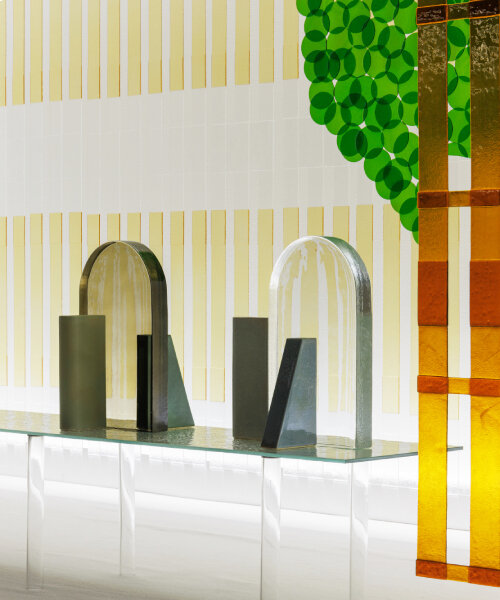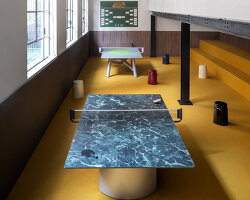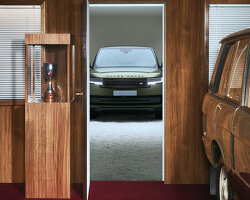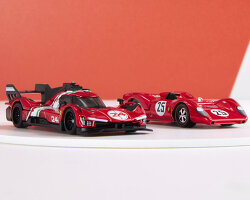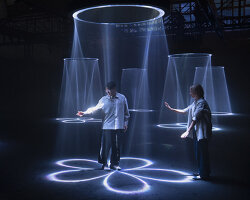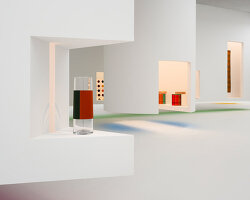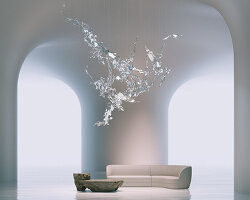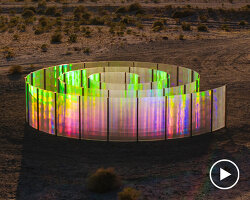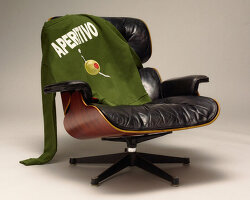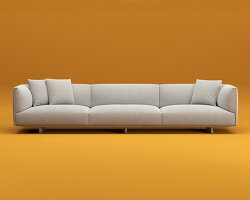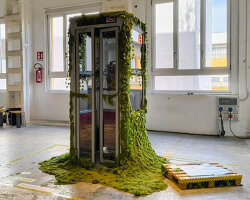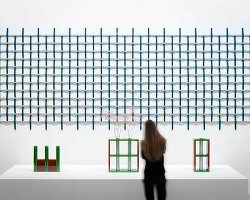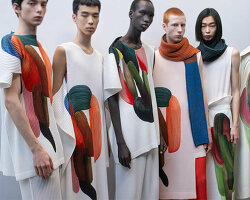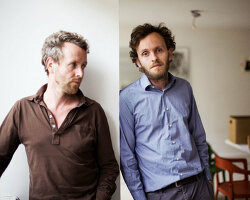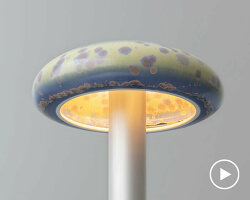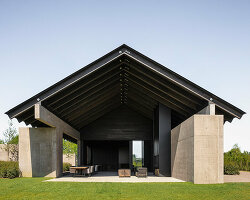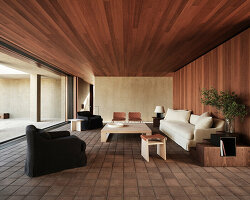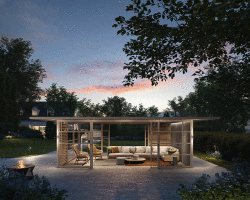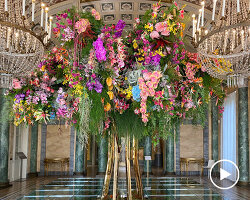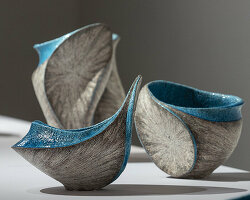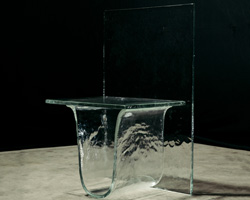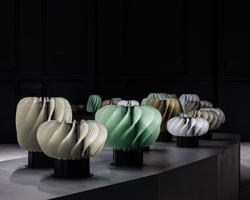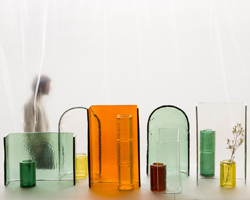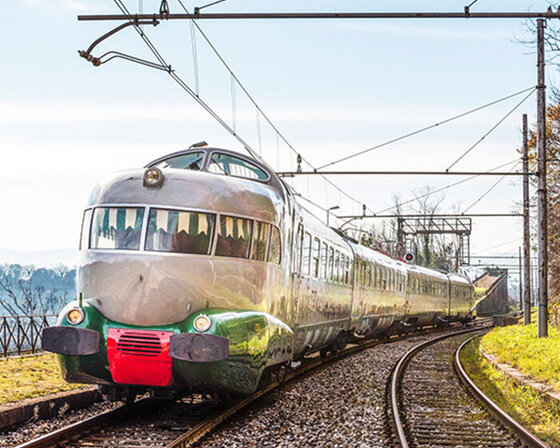Ronan Bouroullec and Vincent Van Duysen at milan design week
Ronan Bouroullec and Vincent Van Duysen craft a series of fused-glass installations for Wonderglass during Milan Design Week 2025. Titled Poetica, the exhibition at Istituto dei Ciechi runs between April 8th and 12th, displaying the recent works of the designers. The scenography is complemented by the wallpaper designs from Calico Wallpaper and a special contribution by Officine Saffi Lab. Two days before the opening, designboom speaks with Ronan Bouroullec and Vincent Van Duysen in the exhibition’s venue about their creations for Wonderglass.
The French designer presents two collections: Architettura per Fiori developed in collaboration with Officine Saffi Lab, as well as the installation Vetrofuso Spazio. With the Belgian architect and designer, he introduces Optô, a series of tables and panels designed from perforated fused glass. Both of the renowned figures respond to the theme of poetry. Ronan Bouroullec stages his installation in a white box, suspending his tapestry-like thin glasses with colored strips as the scenery for his translucent cast glasses and enamelled ceramics. In front of these, Vincent Van Duysen lays down his perforated panels and tables made from fused bits of glasses. His collection looks illuminated as the white lighting of the floor passes through the transparent material.

all images courtesy of Wonderglass, unless stated otherwise | photos by Antonio Managò
Interview with Ronan Bouroullec and Vincent Van Duysen
Ronan Bouroullec tells designboom that he treats the making of Architettura per Fiori and Vetrofuso Spazio as research, not as products or pieces. The former presents a series of arch-shaped, almost-opaque glasses with a couple of modular enamelled ceramic vases around them. For the latter, the renowned designer creates an overlapping layer of thin green circular glasses, taking the shape of a cloud or tree. ‘What you see here is something certainly new: glass linked together by fusion,’ the designer shares with us during our interview. He’s discussing the process of fusing shards of bits of glasses to produce the collection, the same approach that the architect and designer Vincent Van Duysen applied to his series of tables and a panel.
The translucent cast glass can stand on its own as a design object. When asked why he has created the enamel ceramic vases, the Ronan Bouroullec explains that ‘we are in a time where deep enamel has disappeared.’ In a way, he’s bringing that craftsmanship back. ‘I’m in love with this fusion technique, as well as with the vases that could be placed in different ways: in front, in the back, on the side. You emphasize the transparency of the glass and the fact that it’s blurred using the flowers. Then, here is this delicate screen made of thin glass, which is part of the exhibition. I think, overall, everything is working,’ the designer shares with designboom.

exhibition view of Poetica at Istituto dei Ciechi in Milan, Italy
Poetic landscape inside Istituto dei Ciechi for wonderglass
The white background allows the vibrant glass installations of Ronan Bouroullec to stand out, making them seemingly float. He says that the design is intentional, a reminiscence of the tesserae glasses in the cathedrals when the sunlight shines on them from outside. From afar, some of the pieces do resemble suspended as the white light blends with the transparent glass. The autumnal colors become another point of our discussion. ‘I like to work with color, but I don’t know exactly how to speak about it. It’s very intuitive, my way of using color palette. What is interesting, this series is almost like a watercolor drawing; something very faint with a contrast color,’ he says.
Ronan Bouroullec admits that his color palette has evolved over time. One thing that stays with him is the use of these light shades, the hues visitors can find in nature. Aside from the use of natural colors, the essence of shape for the designer comes through. ‘They have personal meaning to me,’ he says. ‘But I try to build a sort of theory of form, trying to find a certain type of harmony or elegance more than a meaning. It’s more a question of how to reach delicacy, to reach a certain beauty with almost nothing. Some of them are circular, some of them have a more modest shape or form. When you combine or link them together, you generate something that is quite surprising.’

view of Ronan Bouroullec’s Architettura per Fiori and Vetrofuso Spazio glass installations in Milan
With Vincent Van Duysen, his glass series Optô comprises two tables with hand-blown design pieces and a curved screen, all of which have equally sized holes around them. He explains to designboom that the name of the series comes from the ancient Greek word, which means optic or vision. ‘It’s a whole perforation. It can be a cut – a cut that allows light to come in or that creates an opening – where there is a play between light and shadow. The pieces then create that duality between closeness and openness, which produces that playfulness of light,’ he shares with us. For the architect and designer, the screen symbolizes a barrier, a protection from something.
With it being translucent, it offers a poetic significance, which harks back to the name of the exhibition, Poetica. ‘This is a playful take on translucency versus opacity,’ he adds. Then, the two tables, both of which emerge by fusing shards or bits of glass together. The idea of a screen returns through the two panels held together by mouth-blown glass tubes. They have the same diameter as the perforations. A few of these glass tubes penetrate through, resembling vases and even drinking glasses. ‘You can take them out and replace them. You can play with them. They give a kind of freedom for the users to create their own combinations,’ says Vincent Van Duysen, noting that these structures circle back to his own architectural ethos.
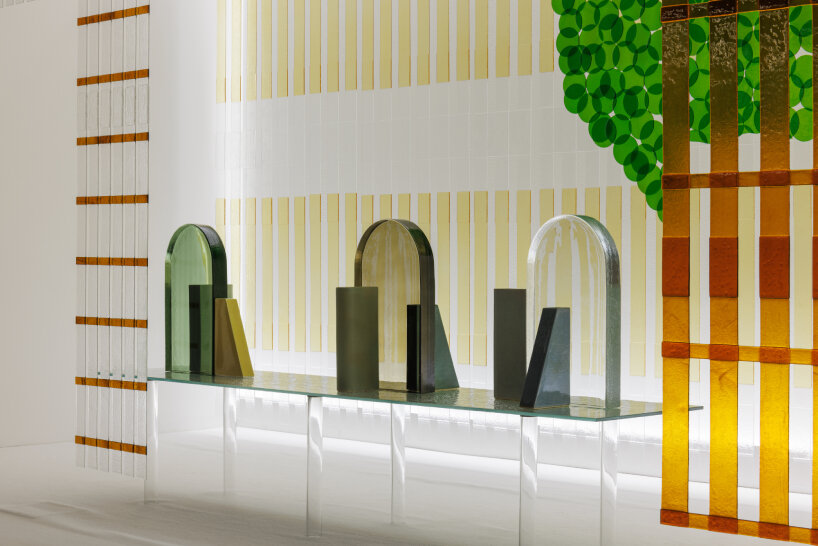
Architettura per Fiori presents a series of arch-shaped glasses with modular enamelled ceramic vases
Frosted water and even oxygen come to Vincent Van Duysen’s mind during the making of Optô for WonderGlass. He interprets beauty in his pieces as fresh and light, even if they weigh physically. There’s that duality again, the interplay between physicality and visual lightness. ‘The use of fused glass enhances the fact that these pieces are very poetic, that they also belong not only to the world of construction and architecture but also to humanity and to the world of nature,’ says the architect and designer. Like Ronan Bouroullec, it’s quite an invited foreign territory for Vincent Van Dusyen to work with glass. He uses it in his architecture projects as well as product designs and object pieces.
With WonderGlass, he and founder Maurizio Mussati decide to use a glass-fusing technique for the installations. The step allows him to bring out a new form of invention and artistry from him. Past the use of glass, the architect and designer admits he mostly sticks to natural materials, saying, ‘I love it when pieces are crafted and derived from natural materials. I also use technology, but it is mostly a hidden factor, an underlying design element. I still believe in real craftsmanship, where you still feel the hands and the humanity in the manufacturing of the pieces. This is the beauty of the piece, and that’s what I feel more connected with.’

detailed view of the cast glass and enamelled ceramics for WonderGlass

Vetrofuso Spazio is a series of overlapping layer of thin green circular glasses
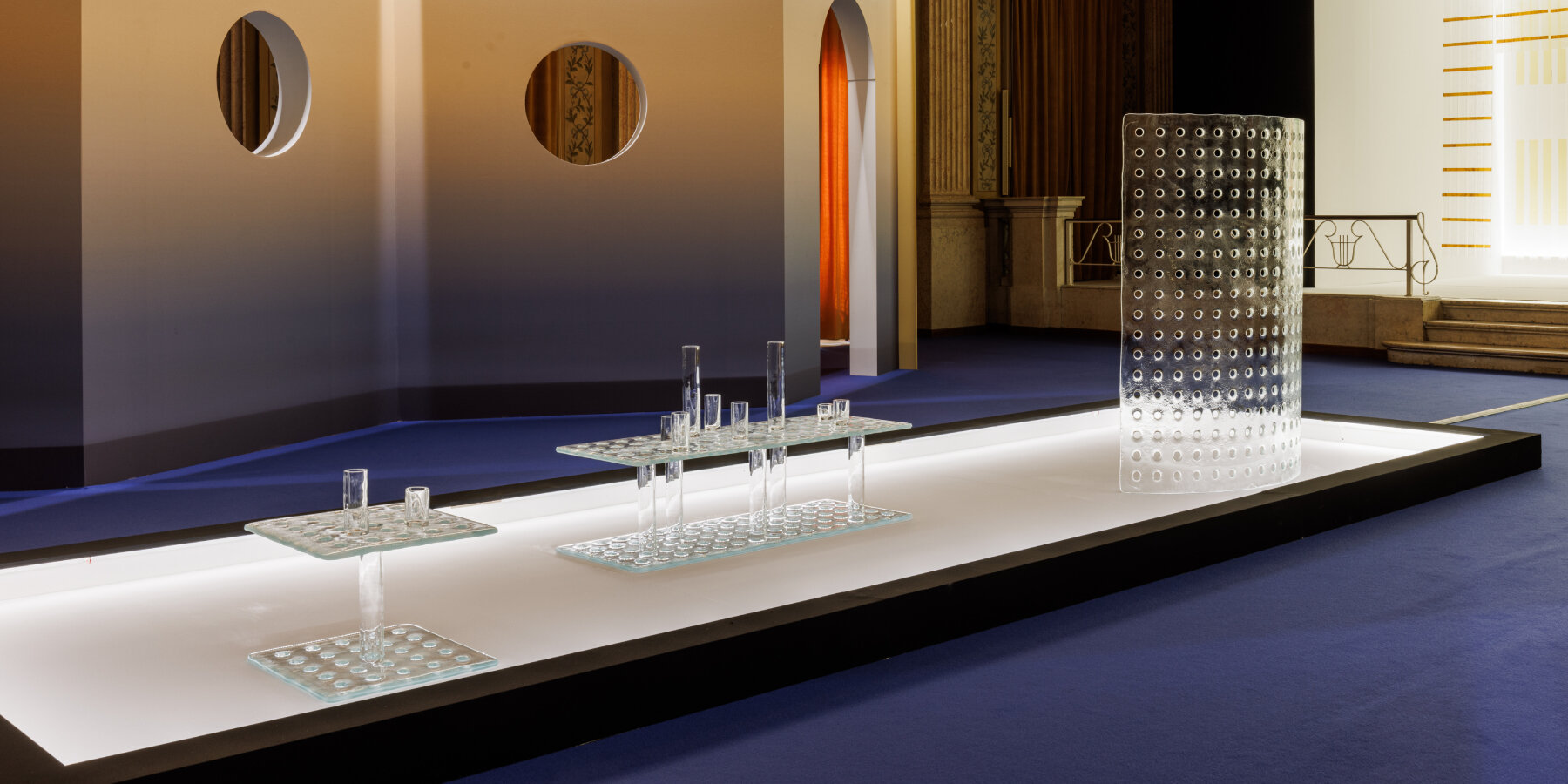
exhibition view of Vincent Van Duysen’s Optô

Optô comprises a collection of tables and a screen
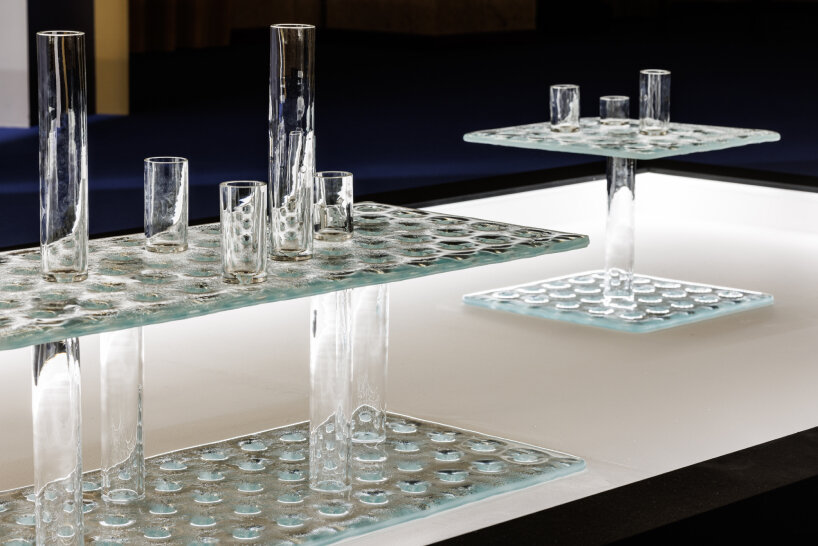
the glass tables and screen have a perforated design

the mouth-blown glass tubes penetrate through, serving as containers and even vases
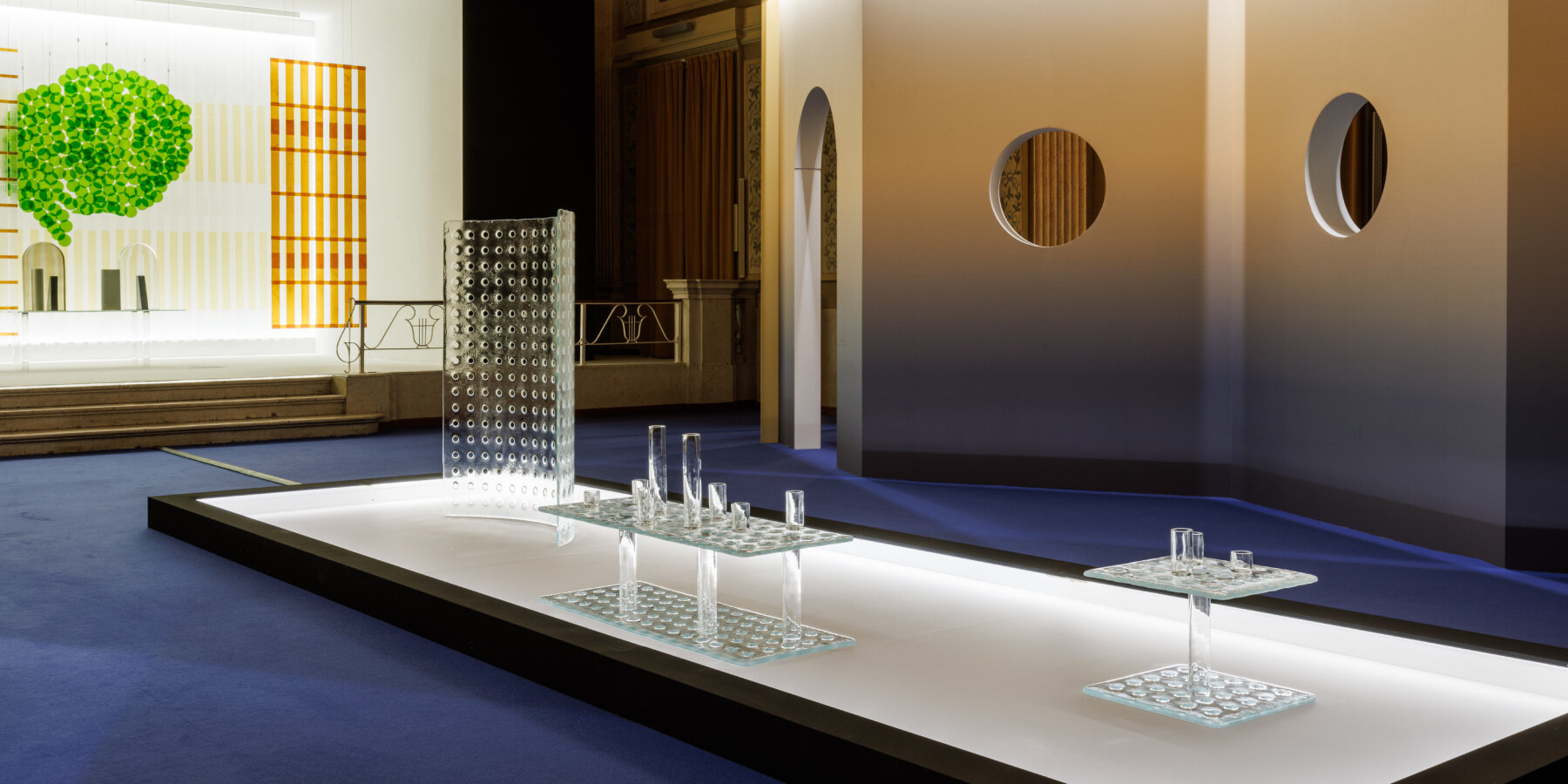
Optô is an interplay between contrast and shadow through light

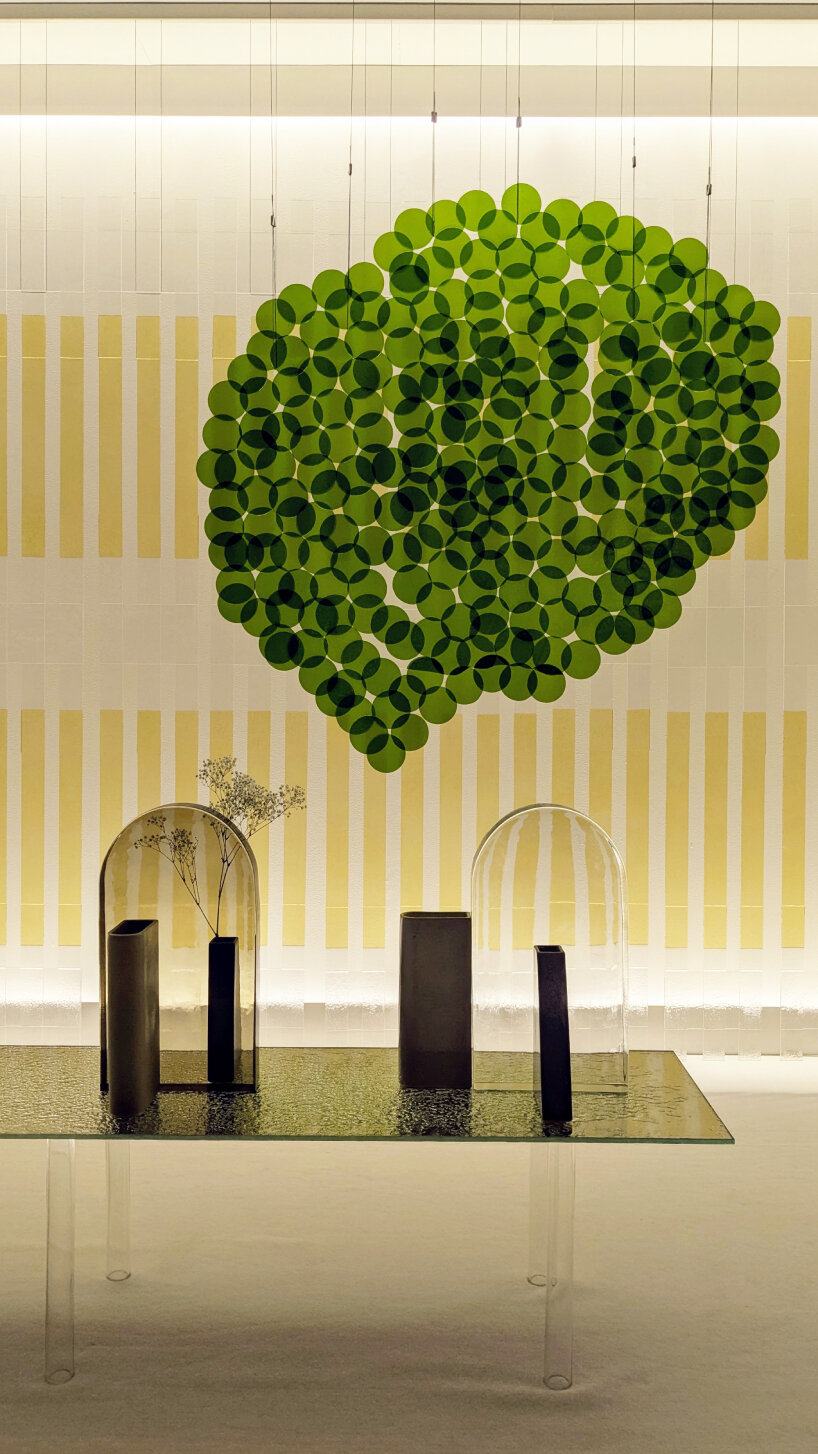
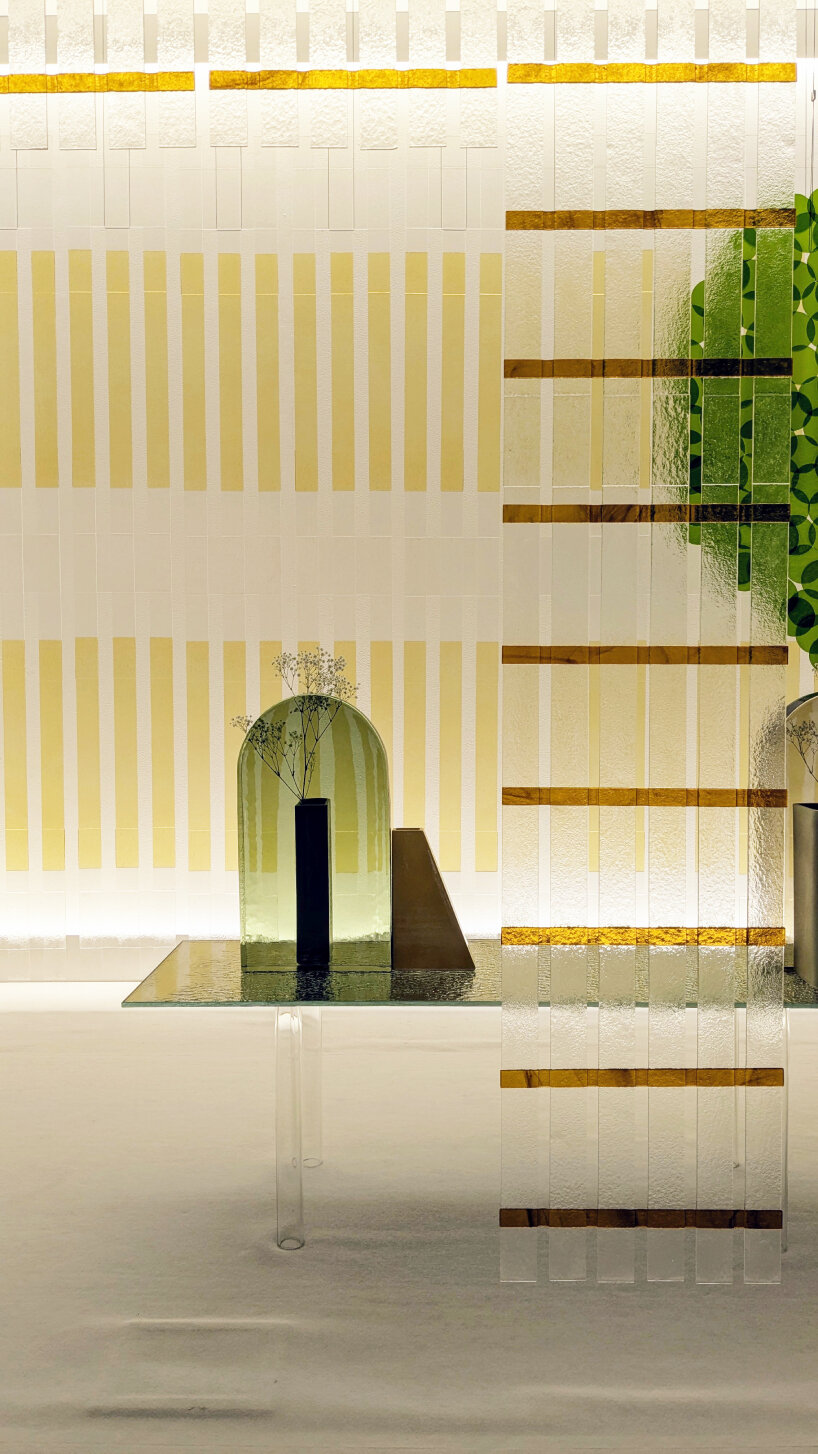
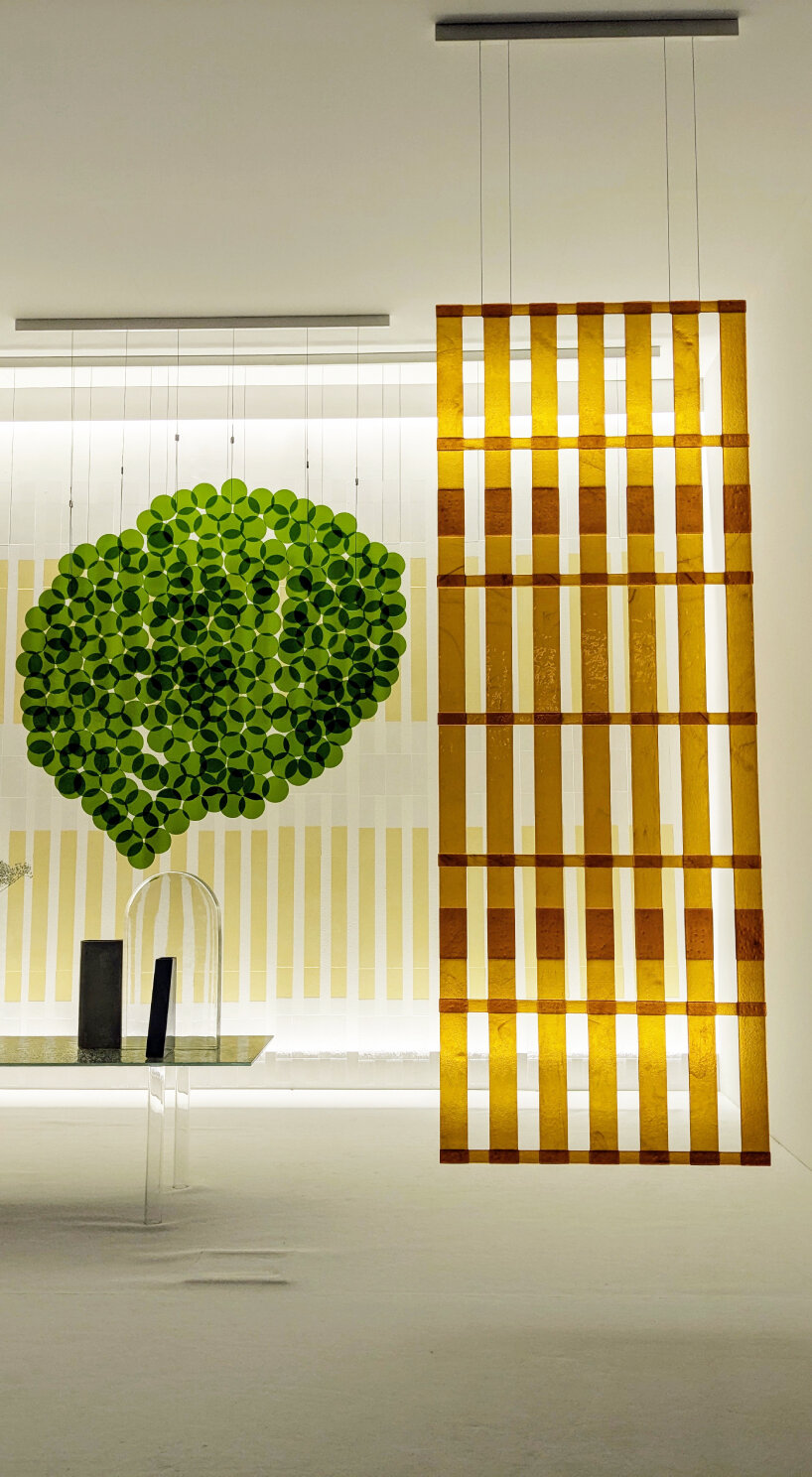
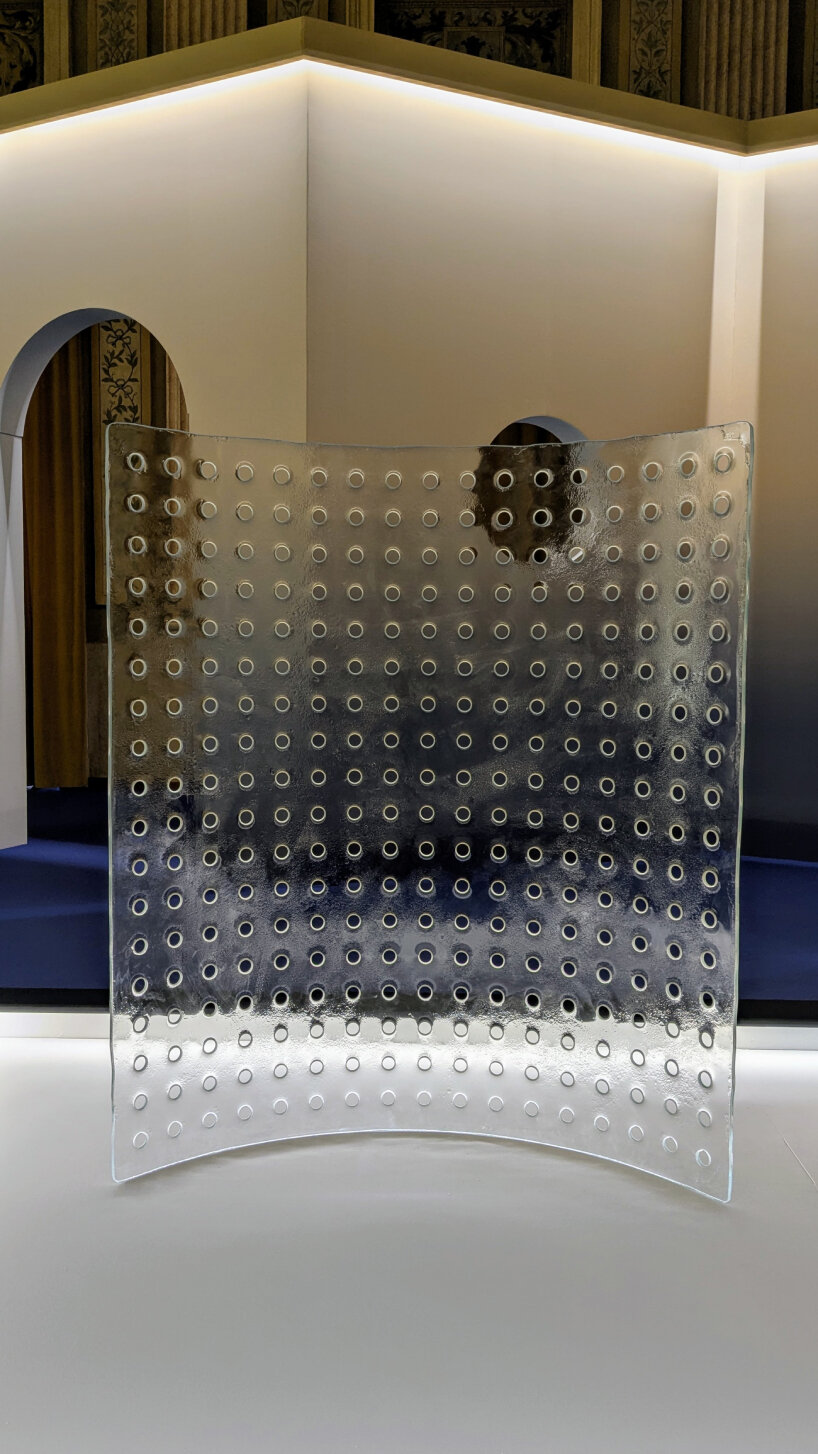
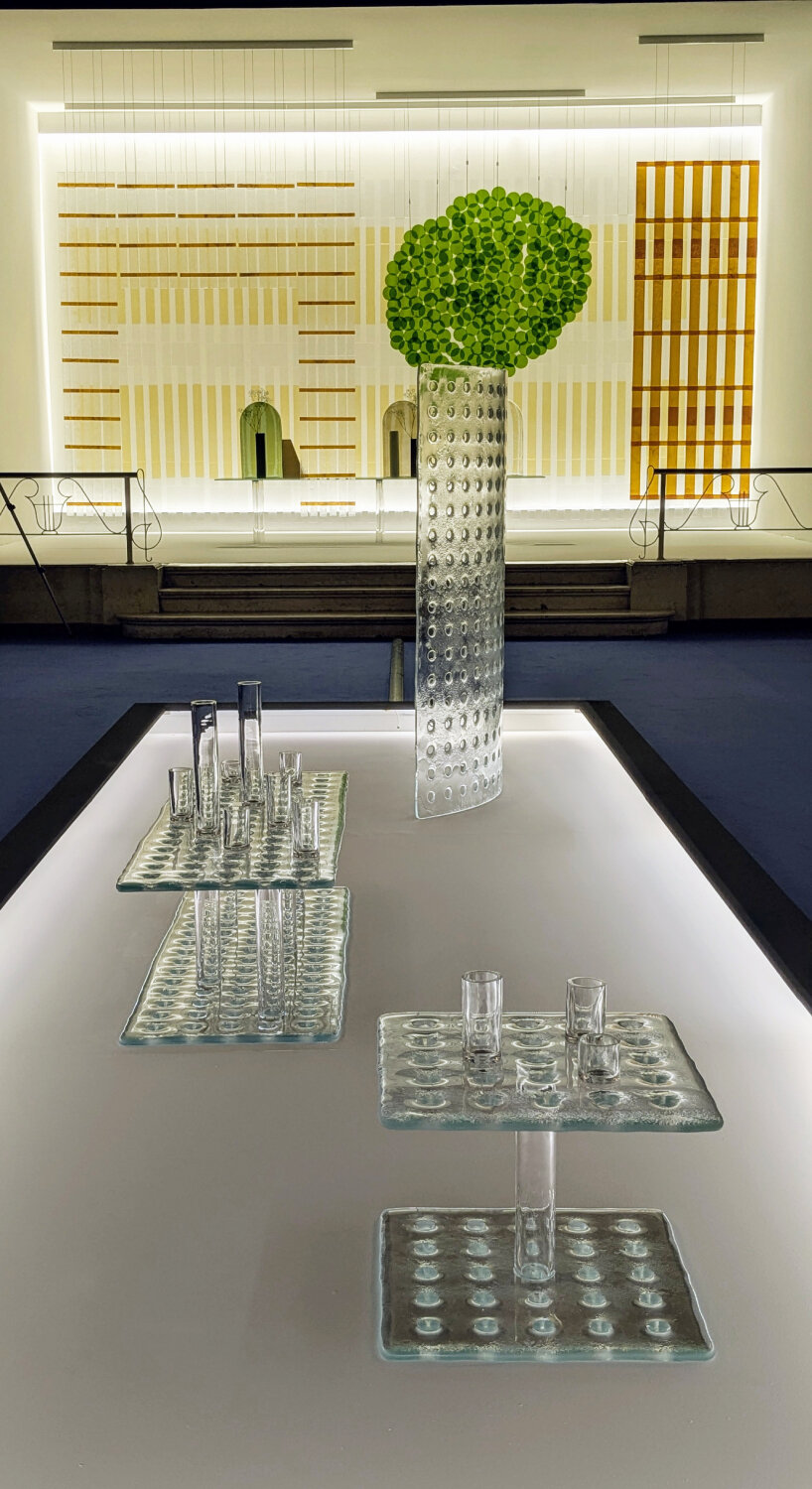
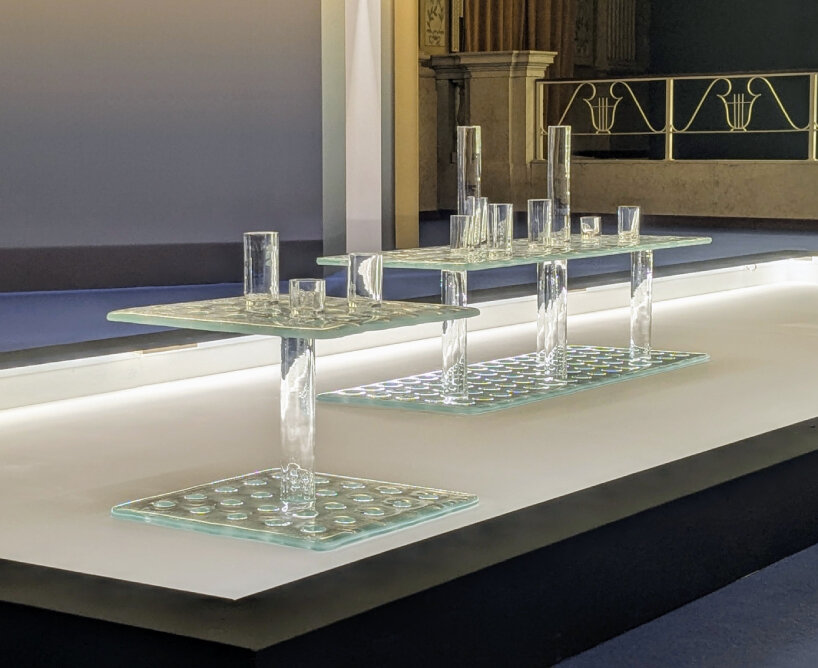
project info:
name: Poetica
designers: Ronan Bouroullec, Vincent Van Duysen | @ronanbouroullec, @vincentvanduysen
brand: WonderGlass | @wonderglassltd
wallpaper: Calico Wallpaper | @calicowallpaper
studio: Officine Saffi Lab | @officinesaffi.lab
installation location: Istituto dei Ciechi in Via Vivaio, 7, Milan, Italy
dates: April 8th to 12th, 2025
photography: Antonio Managò | @antoniomanago
